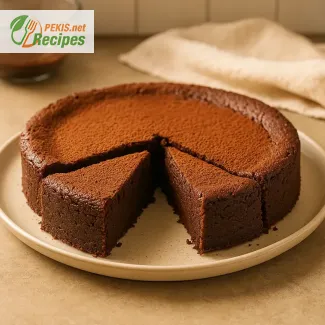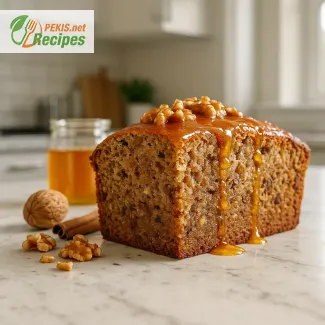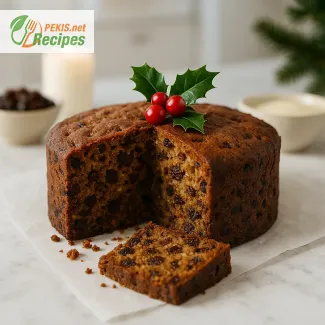
Discover the Ultimate Keto Chocolate Dessert Without Guilt
A rich and satisfying flourless cake for low-carb lifestyles
In a world where indulgence often comes with compromise, finding a keto dessert that delivers on taste without sacrificing your goals can feel like chasing a fantasy. That’s why this keto flourless chocolate cake has become a staple among those who live a low-carb, sugar-free lifestyle—it satisfies chocolate cravings with deep, bold flavor while staying entirely within keto parameters. Whether you're following a strict ketogenic protocol or simply want a smarter dessert option, this cake brings together simplicity, elegance, and nourishment in every bite.
Unlike traditional cakes that rely on flour and refined sugars, this version focuses on pure cocoa richness, healthy fats, and natural sugar alternatives that won’t spike your blood sugar. It’s crafted to be moist, dense, and intensely chocolatey, with a texture that melts in your mouth—ideal for both everyday indulgence and special occasions.
Why this flourless keto cake stands out
Unlike many grain-free desserts that can turn out dry or crumbly, this cake uses a carefully balanced ratio of almond flour or ground nuts, eggs, and unsweetened cocoa powder to achieve a structure that’s both tender and fudgy. There's no need for gluten substitutes or complex binders. Every ingredient plays a role: from the eggs that give structure and moisture, to the natural low-carb sweeteners that provide just enough sweetness without the sugar crash.
Whether you’re a seasoned keto baker or a newcomer looking to impress guests with a healthy alternative to traditional chocolate cake, this recipe makes it foolproof to create bakery-quality results at home—no special skills required. It bakes beautifully in under an hour, making it a practical choice for busy weekdays or spontaneous dinner plans.
The key ingredients behind the magic
The success of a flourless keto chocolate cake lies in the quality of ingredients. Here are some of the hero elements you’ll rely on:
- Unsweetened cocoa powder: This is where all the chocolate flavor comes from. Choose a high-quality, dark cocoa for maximum depth and aroma.
- Eggs: Essential for binding and giving volume. They also add richness and structure to a flourless base.
- Almond flour or finely ground nuts: Adds subtle nutty notes and helps create the dense, moist crumb this cake is known for.
- Butter or coconut oil: Both options work to enrich the batter, while helping the cake stay soft and luscious after baking.
- Low-carb sweetener: Erythritol, allulose, or monk fruit are popular choices. These sweeteners allow you to maintain the sugar-free profile without sacrificing taste.
Each of these components is commonly found in keto kitchens, and together they produce a cake that’s as indulgent as any made with traditional ingredients.
Benefits of going flourless and sugar-free
Choosing a flourless and sugar-free cake isn't just about staying in ketosis—it’s also about prioritizing ingredients that support energy balance and digestive health. By removing high-carb flours and sugars, you're reducing the load on your metabolism while still enjoying a dessert that feels like a treat.
Flourless recipes are naturally gluten-free, making them suitable for a wide audience, and removing refined sugar helps keep blood sugar levels stable, avoiding the crash-and-crave cycle common with conventional desserts. That means this cake can be enjoyed by more than just keto followers—it’s also a great option for people with gluten sensitivities, or anyone cutting back on sugar.
How to serve and enjoy your keto chocolate cake
Once baked and cooled, this cake can be served as-is or dressed up with keto-friendly toppings like sugar-free whipped cream, fresh berries, or a light dusting of powdered erythritol. It pairs beautifully with coffee or herbal tea and can be stored in the fridge for several days, maintaining its texture and flavor without drying out.
For extra decadence, consider pouring a quick chocolate ganache made from dark chocolate and heavy cream over the top—or layer with keto cream cheese frosting for special occasions. The versatility of this cake makes it a go-to dessert for a variety of keto-friendly celebrations and everyday moments alike.
What makes this keto cake the best choice?
It’s the combination of simplicity, purity of ingredients, and rich chocolate experience that sets this recipe apart. There are no artificial flavors, no complicated steps, and no compromise on satisfaction. Whether you’re looking for a low-carb treat to enjoy at home, or an elegant dessert to share with friends, this cake proves that keto baking can be both easy and exceptional.
Its ability to balance indulgence with clean nutrition is what makes it one of the most loved keto desserts. Rich, fudgy, naturally sweetened, and free from flour—it’s the kind of cake that even non-keto eaters will come back for.
1. Prepare the pan
Preheat your oven to 175 °C (350 °F). Line the bottom of a 20 cm (8 inch) round springform pan with parchment paper and lightly grease the sides with butter or coconut oil.
2. Melt butter and chocolate
In a heatproof bowl set over a pot of simmering water (double boiler), melt the butter and dark chocolate together. Stir gently until smooth, then remove from heat and let it cool for a few minutes.
3. Beat the eggs and sweetener
In a large mixing bowl, beat the eggs and erythritol using a hand mixer for about 2–3 minutes until light and frothy. This helps create airiness in the final cake.
4. Combine ingredients
Slowly pour the slightly cooled chocolate mixture into the eggs while mixing continuously to prevent curdling. Add the vanilla extract and a pinch of sea salt. Then gently fold in the almond flour and cocoa powder until the batter is fully combined and smooth.
5. Pour and bake
Pour the batter into the prepared pan and spread it evenly. Bake in the preheated oven for 28–32 minutes. The center should be just set but still moist.
6. Cool and serve
Let the cake cool in the pan for 10 minutes before removing the springform edge. Serve warm or chilled. Optionally, dust with powdered erythritol or top with fresh berries and whipped cream.
Refine Your Keto Baking: Creative Twists on Flourless Chocolate Cake
Simple ingredient upgrades to enhance taste and texture
Crafting the perfect keto flourless chocolate cake is as much about technique as it is about high-quality ingredients. While the base recipe offers a rich, satisfying dessert with low carbohydrate content, subtle modifications can elevate both the flavor and nutritional value. Whether you're a seasoned low-carb baker or just exploring sugar-free desserts, understanding how to tweak your cake can help you achieve a truly standout result.
How ingredient swaps can improve flavor depth
The quality of the ingredients used in this recipe plays a decisive role in its final flavor. To create a richer and more aromatic dessert, consider switching from standard dark chocolate to a high-cocoa single-origin bar with 85–90% cocoa content. These premium chocolates often offer fruity, nutty, or smoky undertones, which can bring new dimensions to your cake.
Swapping out regular butter for European-style cultured butter can also improve the result. This variety contains less water and more fat, producing a smoother, silkier texture and a subtle tang that complements dark chocolate perfectly.
Another easy but effective change involves using hazelnut or pecan flour in place of almond flour. Both alternatives offer a more pronounced nutty flavor and a slightly finer texture. Hazelnuts, in particular, pair beautifully with chocolate, adding a Ferrero Rocher-style undertone to your cake.
Natural sweeteners and flavor enhancers
While erythritol is a reliable low-carb sweetener, it can occasionally produce a cooling effect on the tongue. Consider using a blend of erythritol and monk fruit for a more rounded sweetness and no aftertaste. If you prefer a smoother consistency, allulose is an excellent choice—it dissolves easily and mimics the mouthfeel of sugar without affecting blood glucose levels.
Enhance the depth of flavor with a pinch of espresso powder or a teaspoon of instant coffee. This doesn't make the cake taste like coffee but subtly intensifies the chocolate flavor, creating a more complex and satisfying dessert.
Adding orange zest, cinnamon, or even a drop of peppermint extract can provide seasonal variations without affecting the structure of the cake.
Homemade over store-bought: better texture, control, and nutrition
Making this dessert at home offers significant advantages. Most store-bought keto desserts use preservatives, stabilizers, or low-grade fats to extend shelf life. When baking from scratch, you maintain complete control over the ingredients, ensuring that only clean, wholesome components go into your body.
Homemade versions also allow for freshness-driven quality: melted chocolate retains its aromatic profile, eggs contribute better leavening, and there’s no risk of added sugar sneaking in under disguised names.
Moreover, the homemade process gives you the flexibility to adapt the recipe to your dietary needs—whether it’s dairy-free, nut-free, or higher in fiber.
Common mistakes to avoid in flourless keto baking
Even though this cake is relatively straightforward, there are a few traps that can compromise the outcome. Overbaking is perhaps the most common mistake—when left in the oven too long, the cake becomes dry and crumbly, losing its signature fudge-like interior. Always test with a toothpick: it should come out with a few moist crumbs, not clean.
Inaccurately measuring almond flour or cocoa powder can result in an imbalanced texture. These dry ingredients should be weighed for accuracy rather than scooped, which can compress them and lead to a dense, dry cake.
Another issue arises with chocolate—low-quality bars often contain added sugars or emulsifiers that don’t perform well in keto recipes. Always check the label for pure cocoa content and minimal additives.
If the cake cracks on top, don’t panic—it’s common in flourless cakes. However, this can be minimized by allowing the chocolate mixture to cool before adding it to the eggs and by baking in a water bath to maintain even heat.
Healthier ingredient alternatives for added value
For a more nutritious take, you can add fiber by incorporating ground flaxseed or chia meal, replacing 10–15% of the almond flour. This also aids digestion and contributes to satiety.
Replacing butter with avocado puree or coconut cream is an option for those looking to cut saturated fat while still keeping the cake moist. Avocado adds a subtle earthiness, while coconut cream offers a hint of tropical sweetness.
If you're focused on boosting micronutrients, stir in a spoonful of collagen peptides or plant-based protein powder, which won’t affect the flavor but can enhance the cake’s nutritional density.
Toppings and pairings that enhance presentation and enjoyment
A plain flourless chocolate cake is delicious on its own, but the right toppings can elevate it into something spectacular. For a decadent finish, top it with a keto chocolate ganache made from melted chocolate and heavy cream. Garnish with crushed toasted nuts, unsweetened coconut flakes, or freeze-dried raspberries for texture and color contrast.
You can also serve slices with a dollop of sugar-free whipped cream or a spoonful of full-fat Greek yogurt, which adds creaminess and balances the richness. If you're hosting, pair it with a cold brew coffee, red wine, or a herbal infusion to complement the flavors without overpowering them.
Exploring these improvements and customizations gives you the confidence to make this recipe your own while still preserving its core appeal: rich flavor, low-carb integrity, and irresistible texture.
Allergens present in the recipe
- Eggs
- Tree nuts (almond flour)
- Dairy (butter, chocolate)
Suggestions for allergen-free substitutions
- Replace almond flour with sunflower seed flour in equal weight to make it nut-free.
- Use dairy-free butter or coconut oil for a lactose-free version.
- Substitute eggs with a chia egg mixture (1 tbsp chia seeds + 3 tbsp water per egg) for egg-free alternative, though texture will vary.
Vitamins and minerals per serving (approximate)
- Vitamin E: 3.5 mg – supports immune function and protects cells from damage
- Magnesium: 85 mg – helps regulate muscle and nerve function
- Iron: 2.8 mg – essential for oxygen transport in blood
- Calcium: 45 mg – supports bone health and cell signaling
- Potassium: 240 mg – aids in heart function and fluid balance
Antioxidants per serving (approximate)
- Flavanols (from cocoa): 160 mg – promote blood vessel health and lower inflammation
- Polyphenols: 200 mg – contribute to reduced oxidative stress
- Vitamin A (from eggs): 90 µg – essential for vision and skin health
- Selenium: 8 µg – supports thyroid function and protects against oxidative damage





